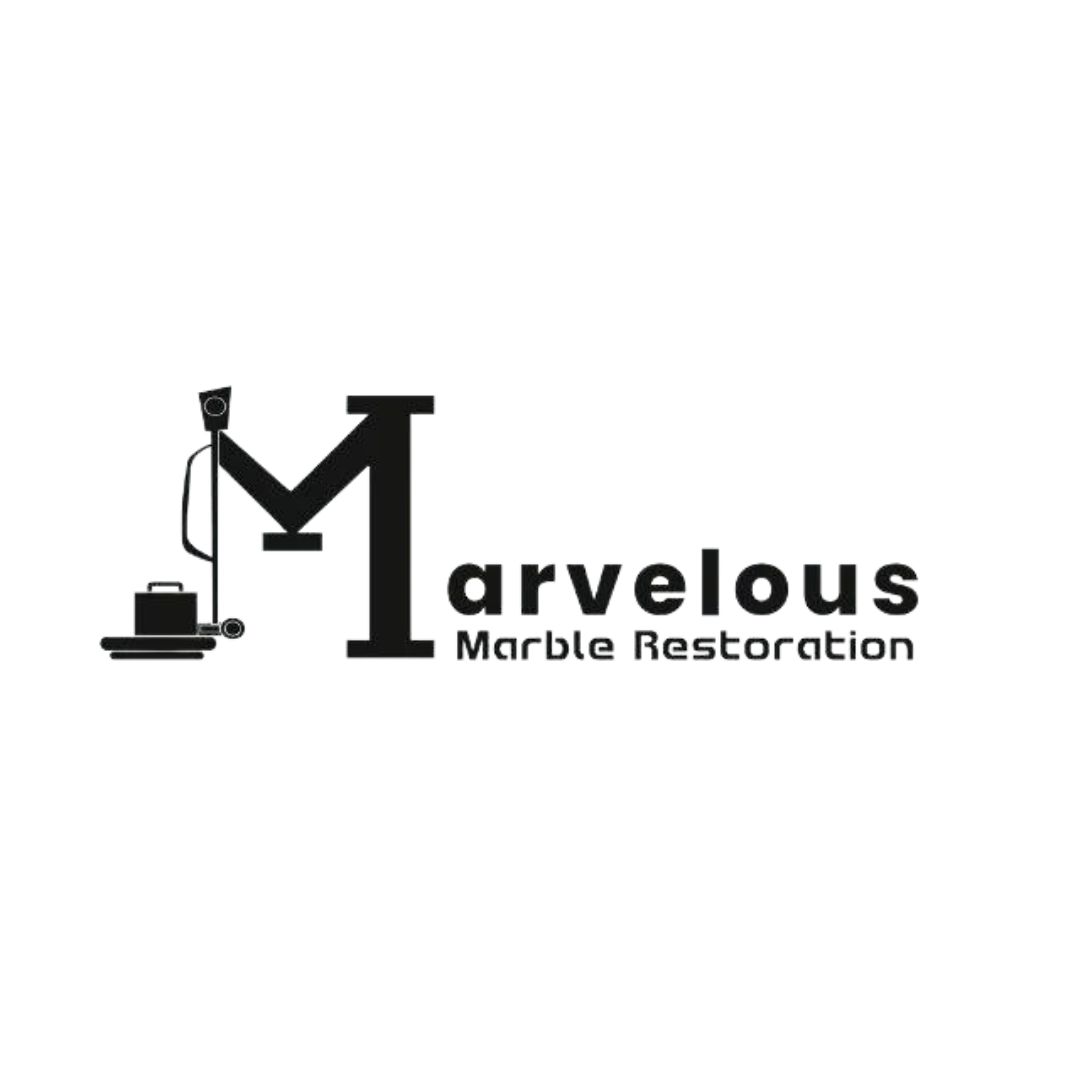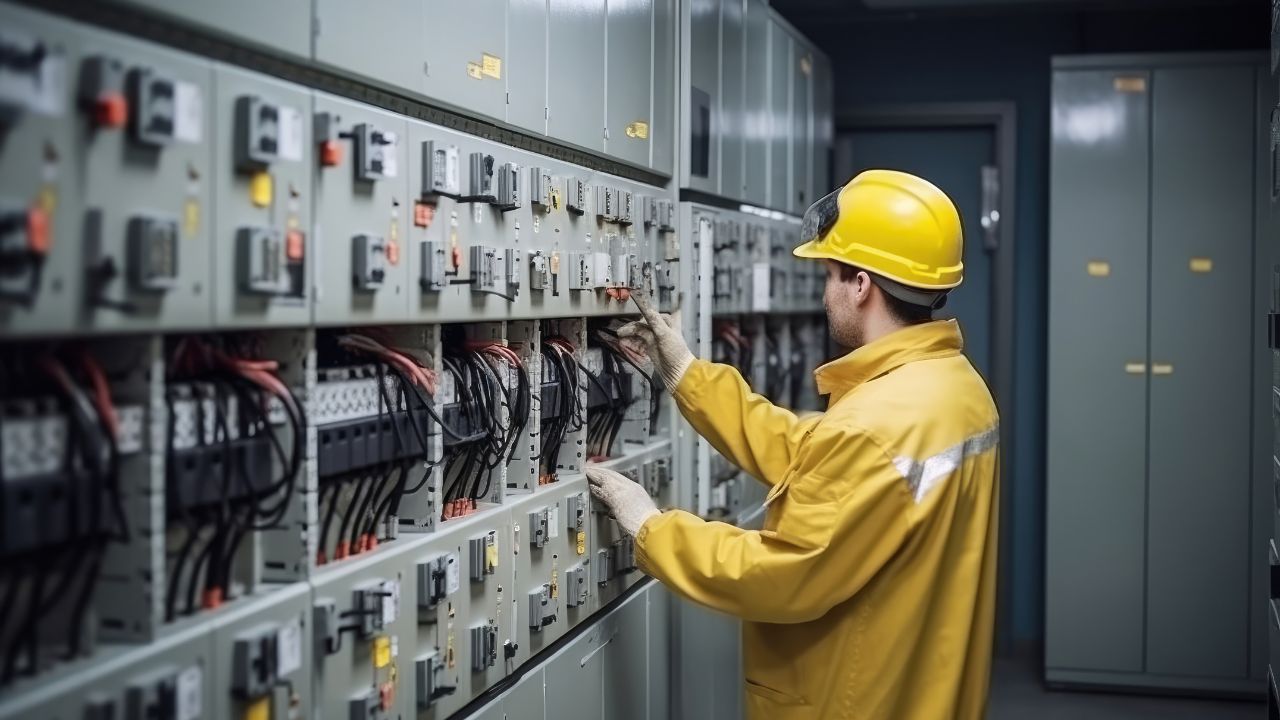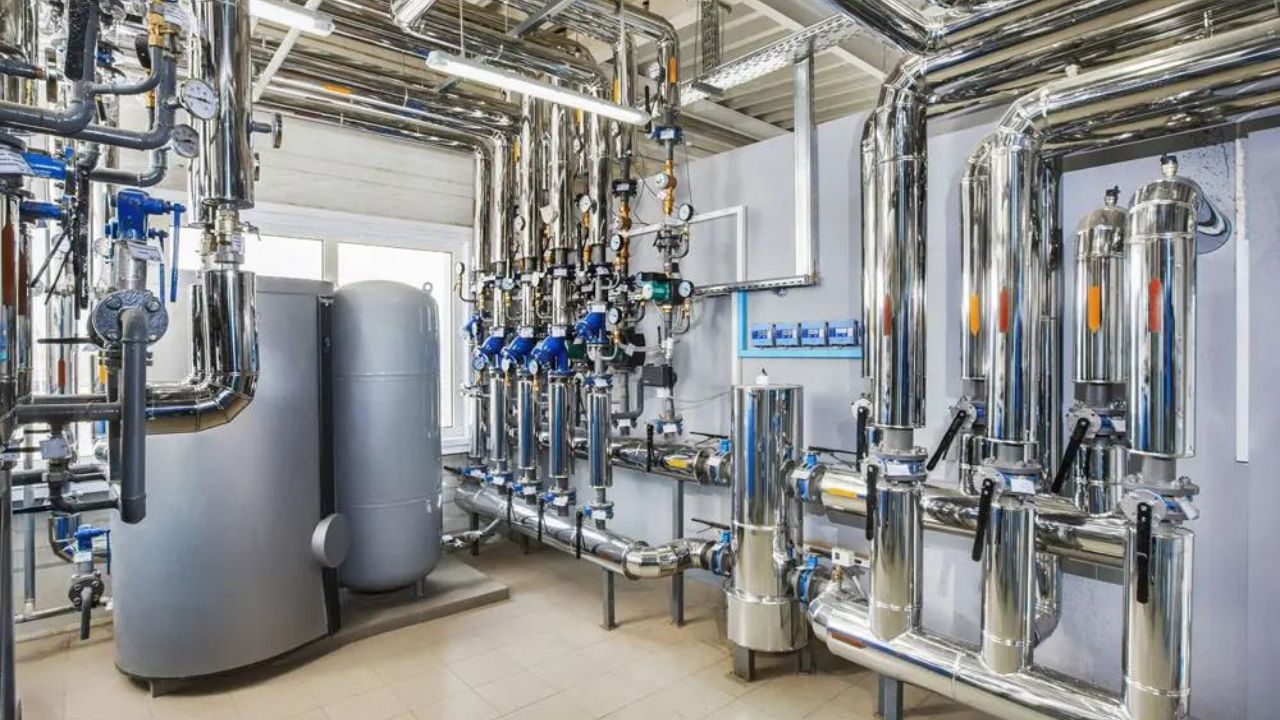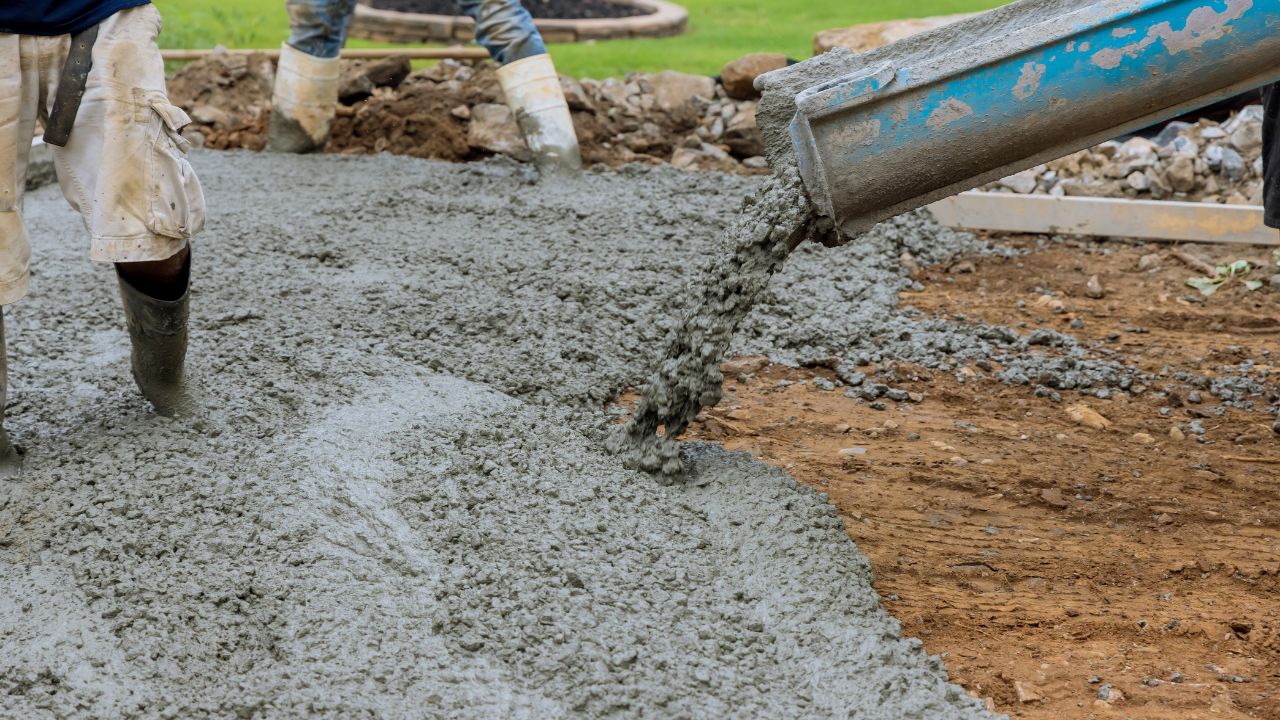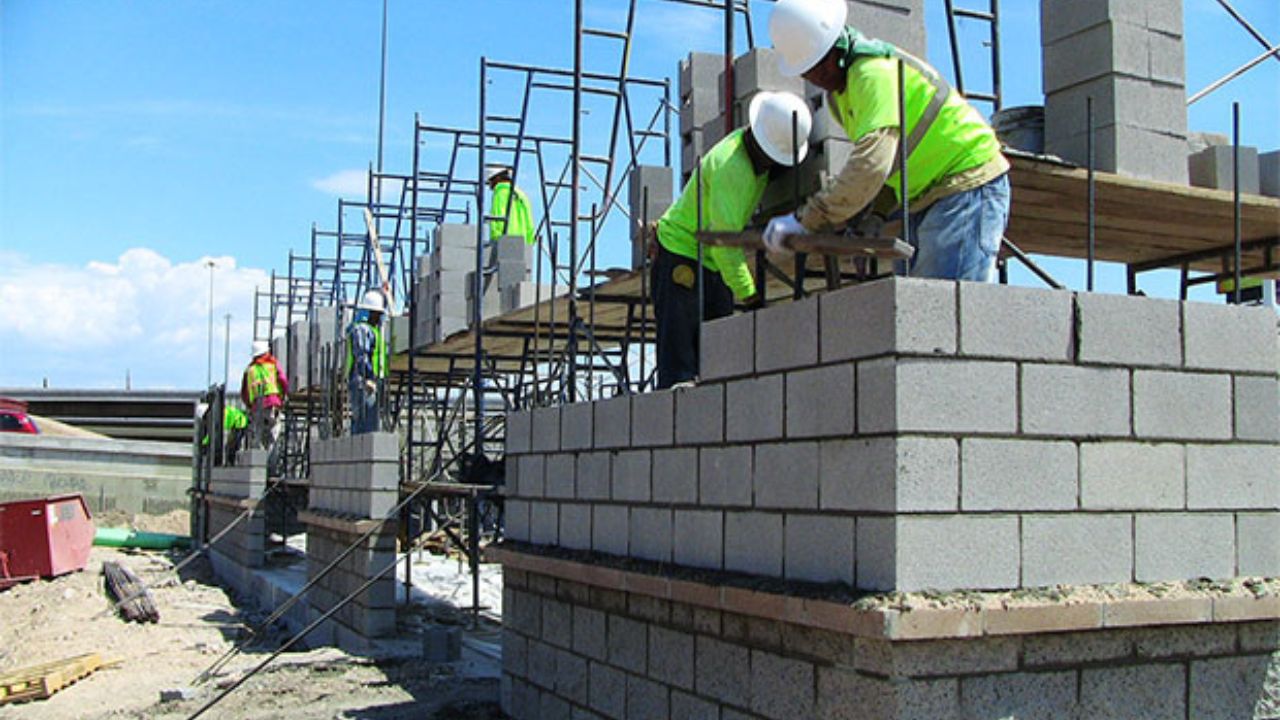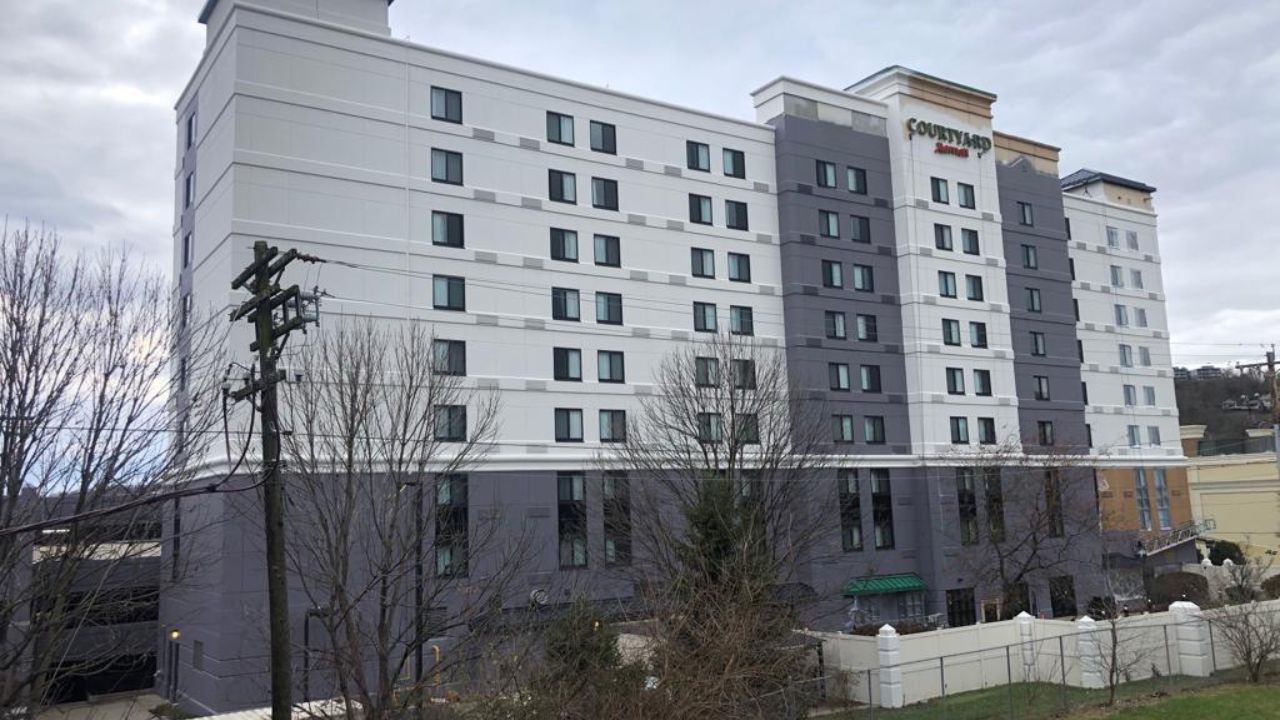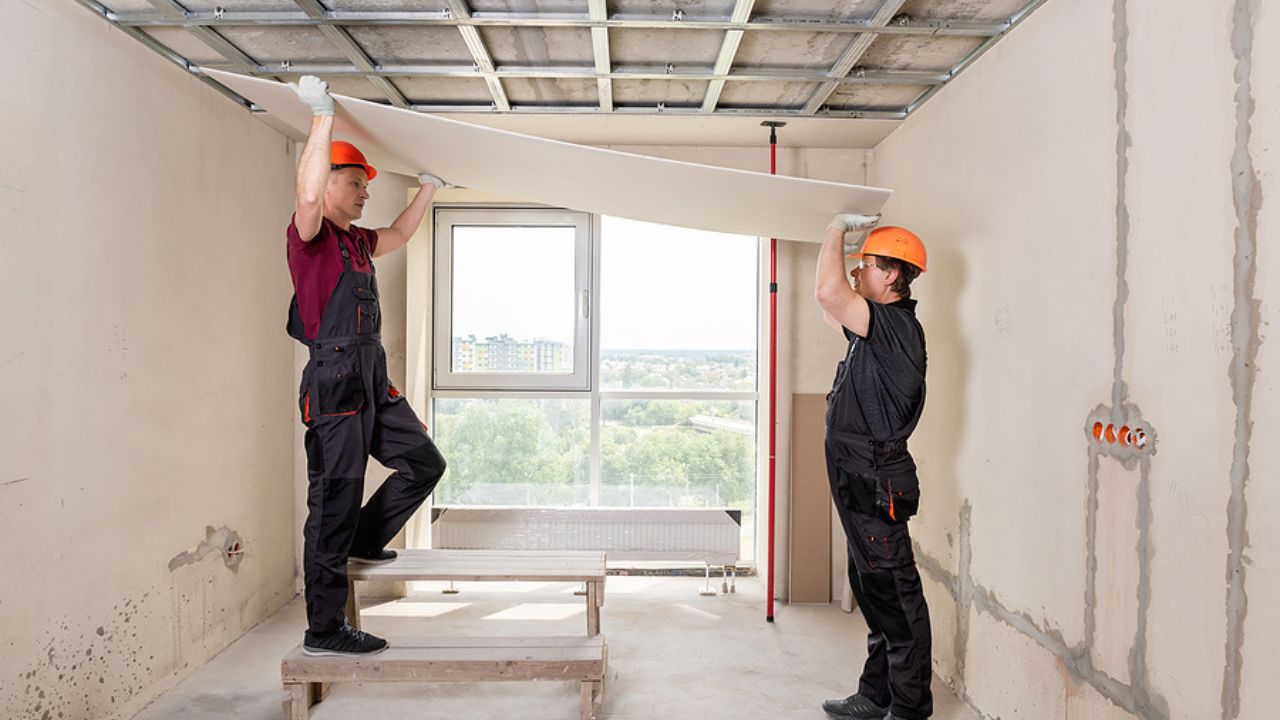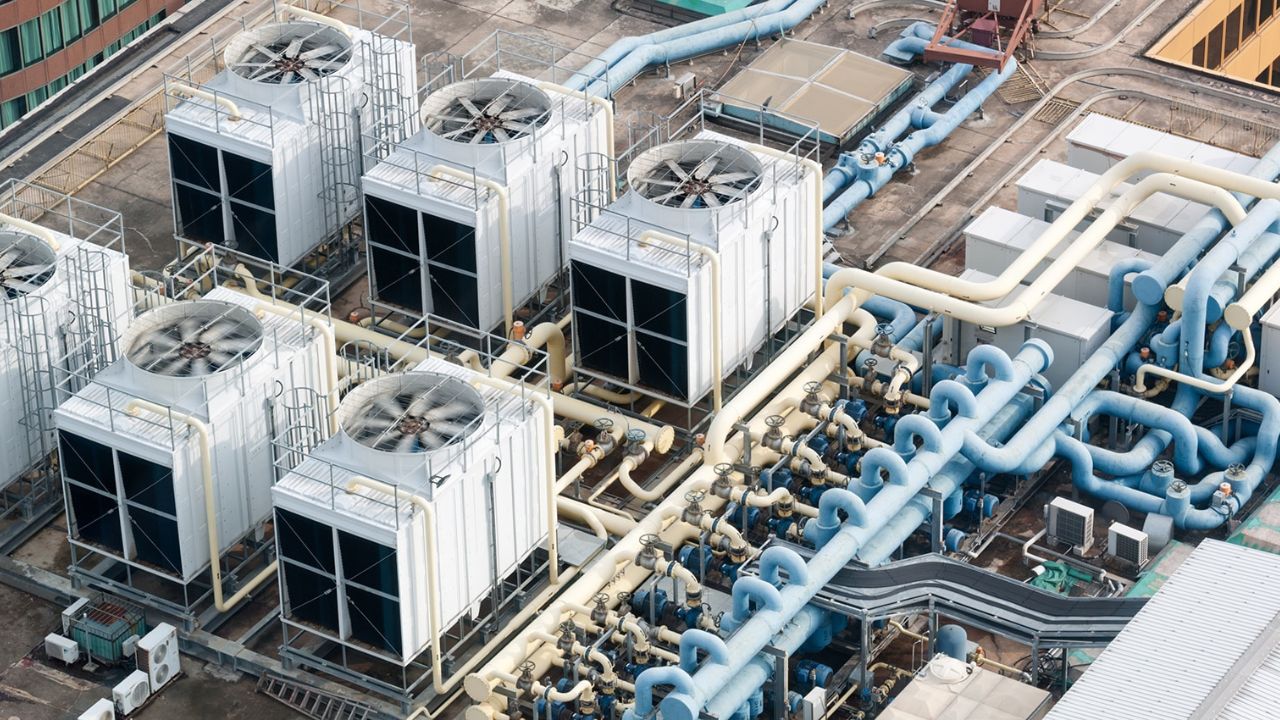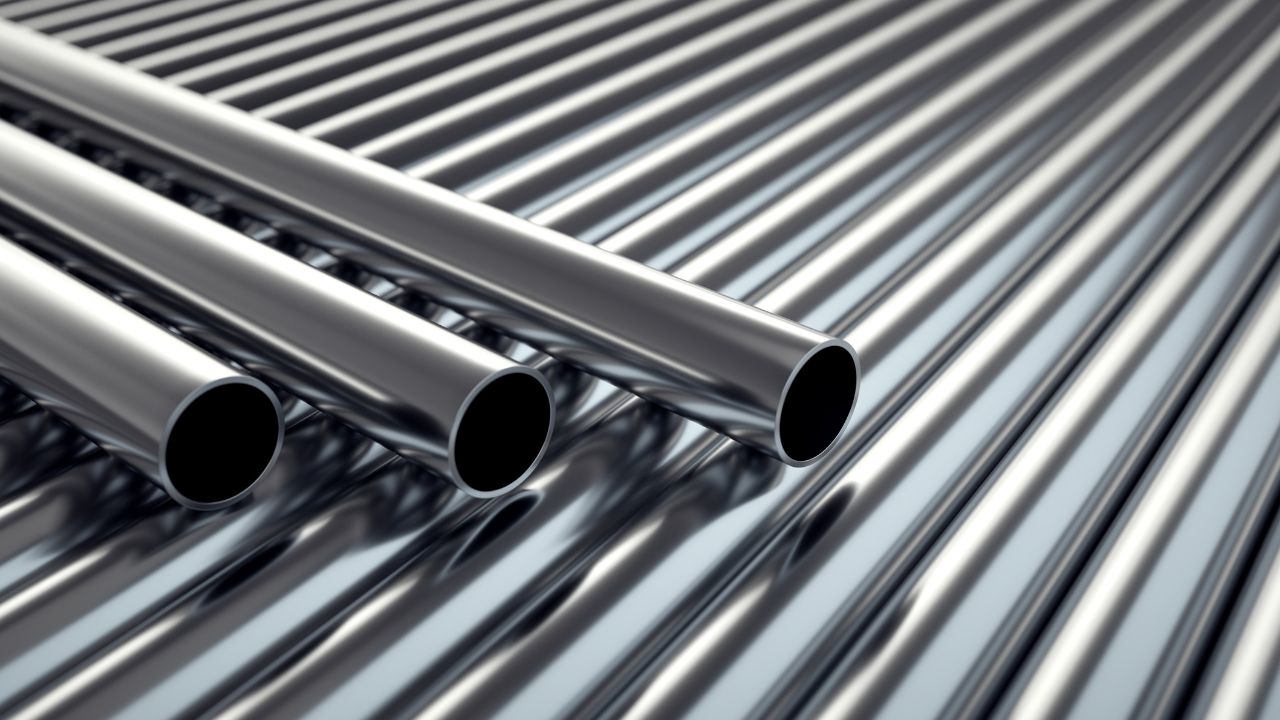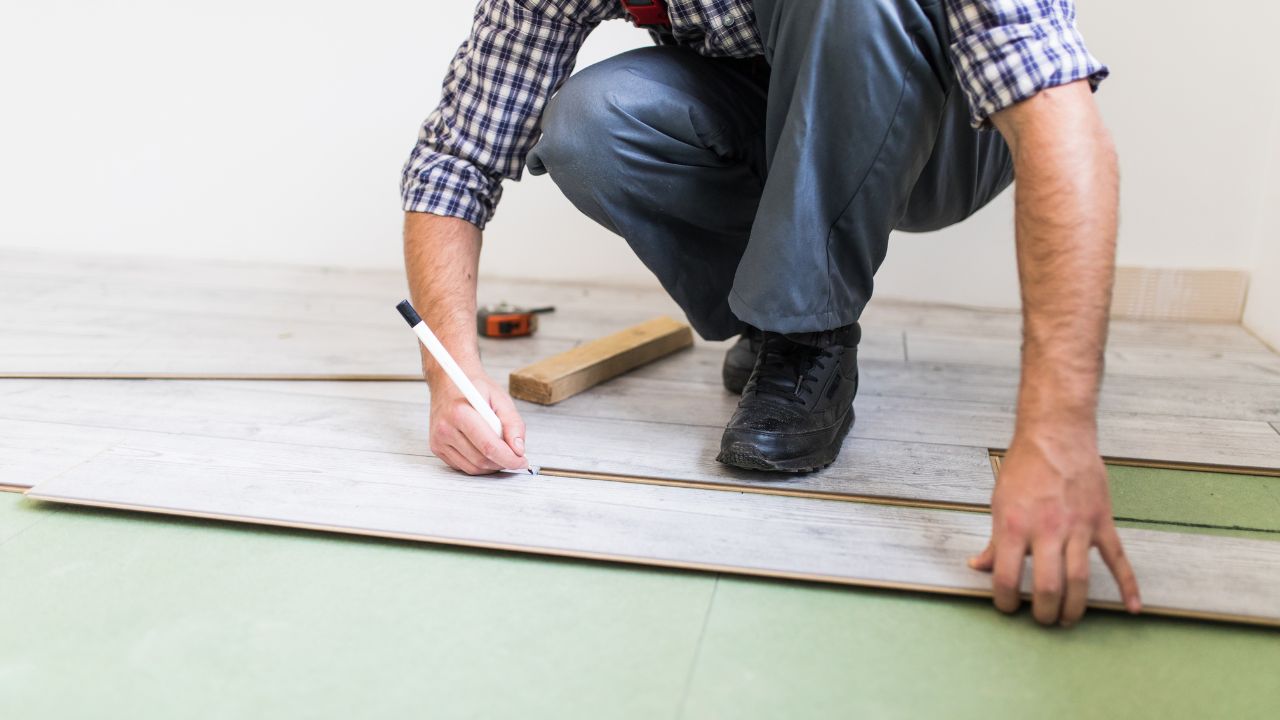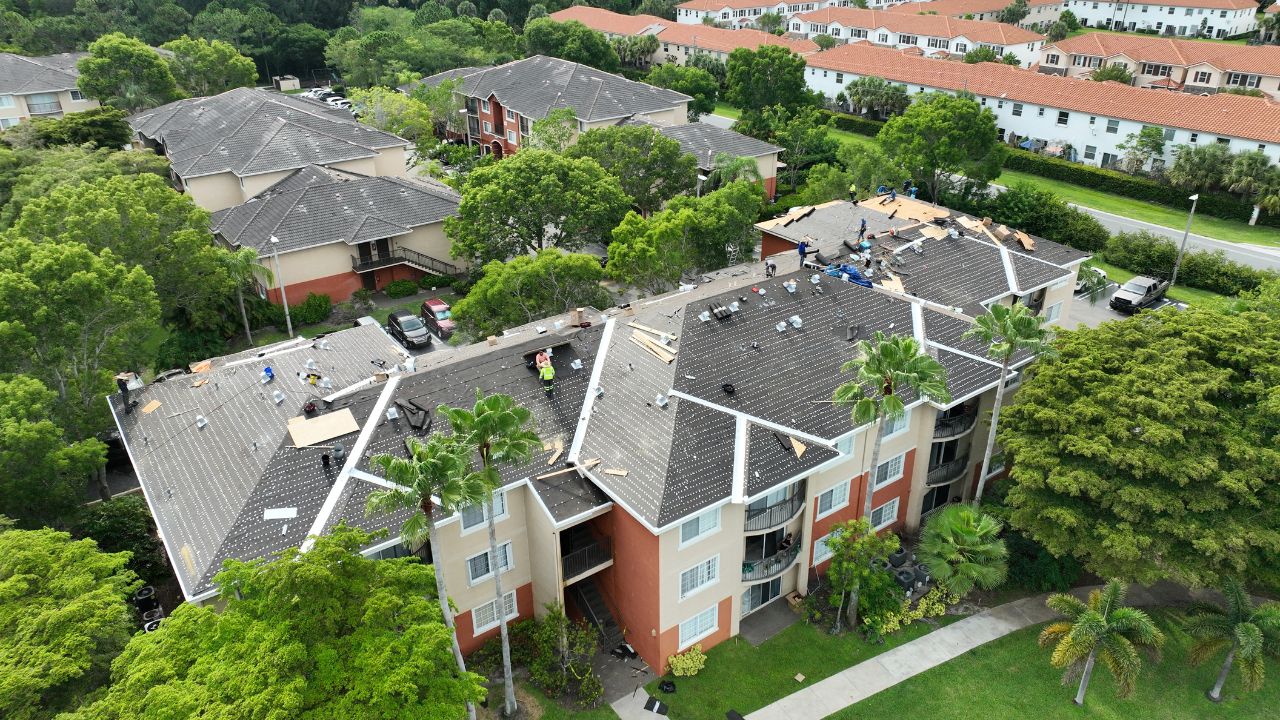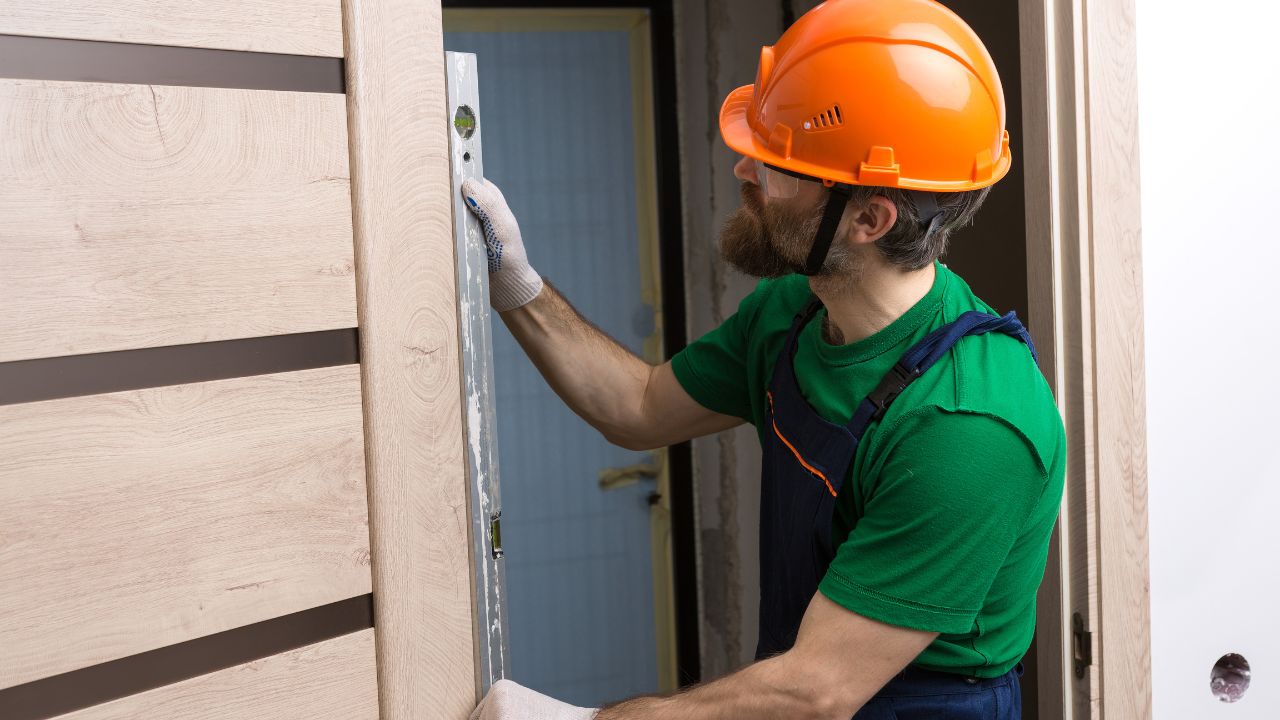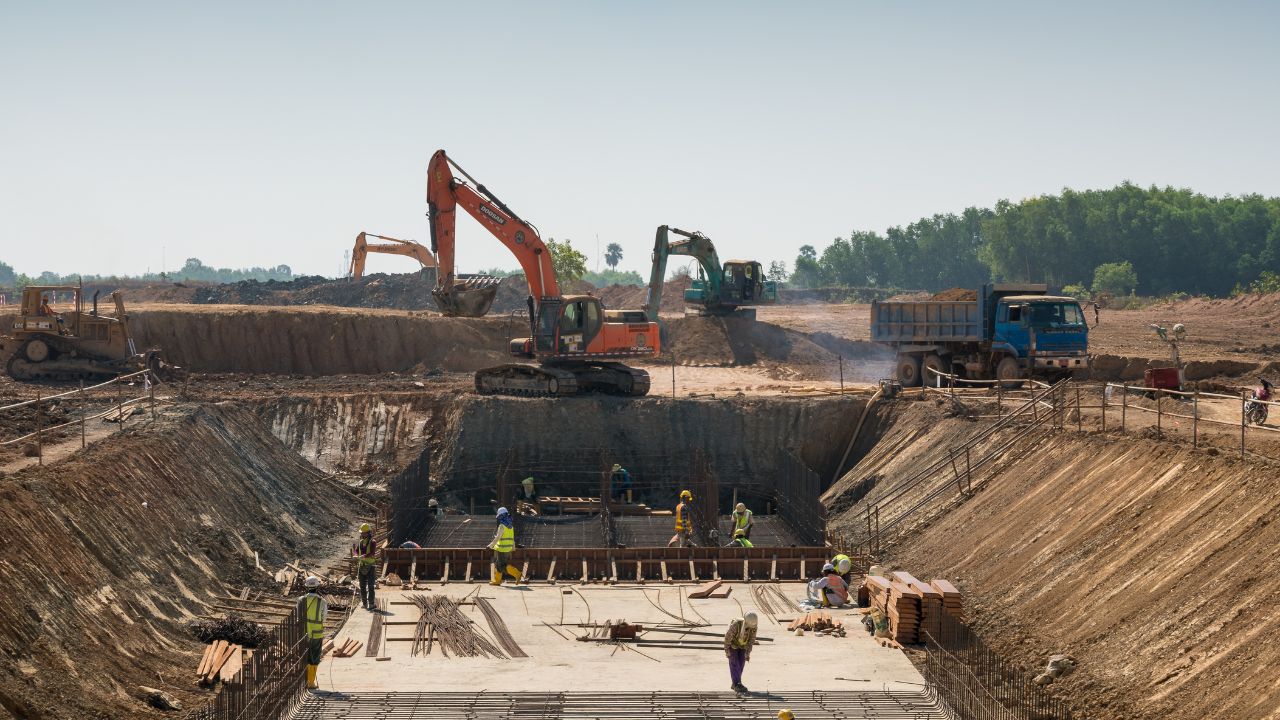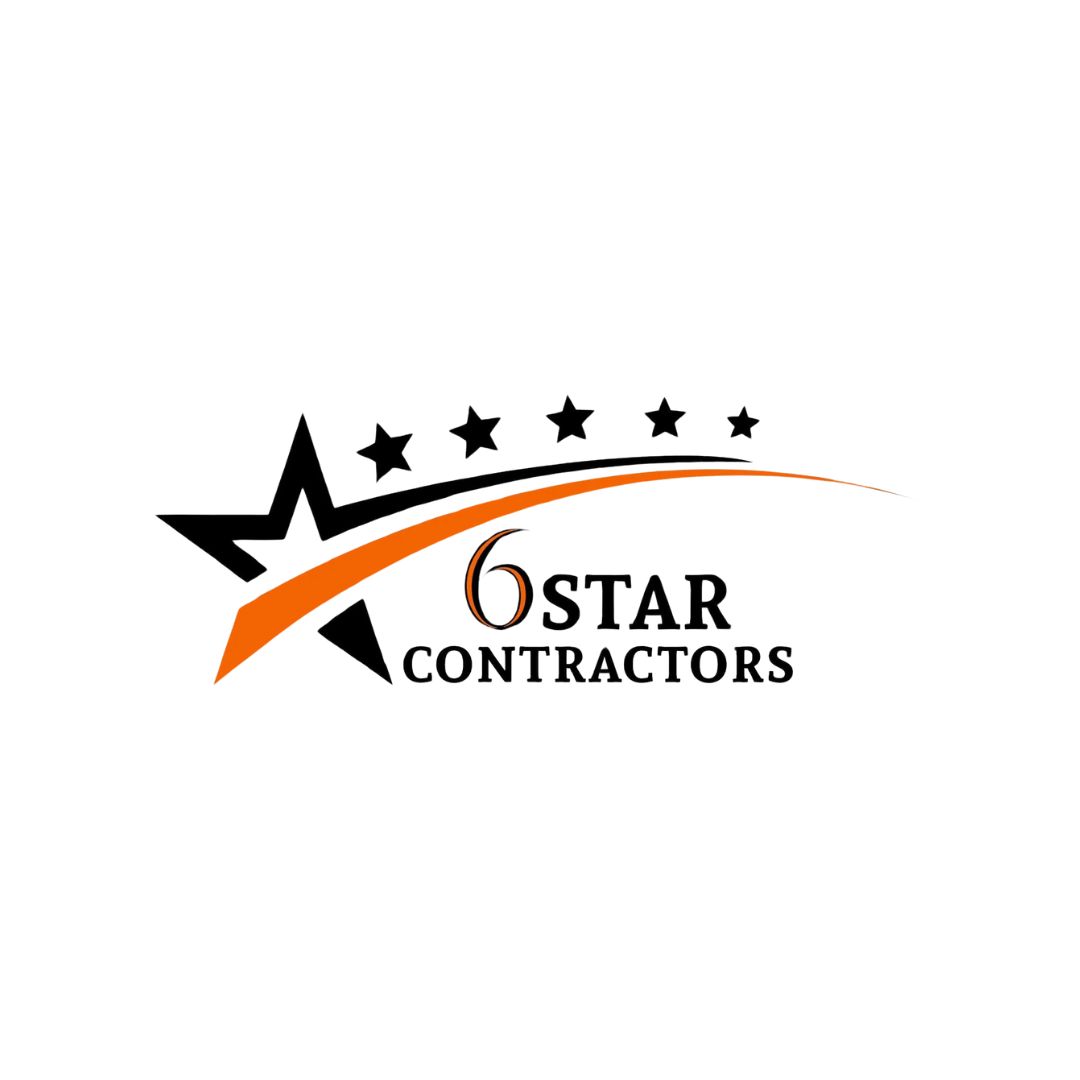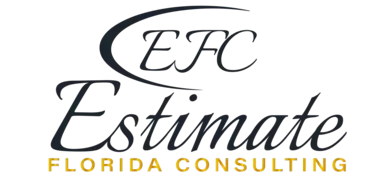- Homepage
- Glass Railing
How Much Does a Glass Railing Installation Cost? [2025 Data]
Leading provider of glass railing installation services
Glass railings are increasingly popular for both residential and commercial properties because they combine safety with elegance and unobstructed views. The cost of installing a glass railing can vary widely depending on material quality, railing style, length, height, and labor charges.
As of 2025, the average cost of glass railing installation ranges from $2,500 to $15,000. Most homeowners spend $4,500 to $8,500 for a standard residential installation. For high-end, custom glass railings with premium materials, prices can go well beyond $20,000.
The overall cost depends on several factors including:
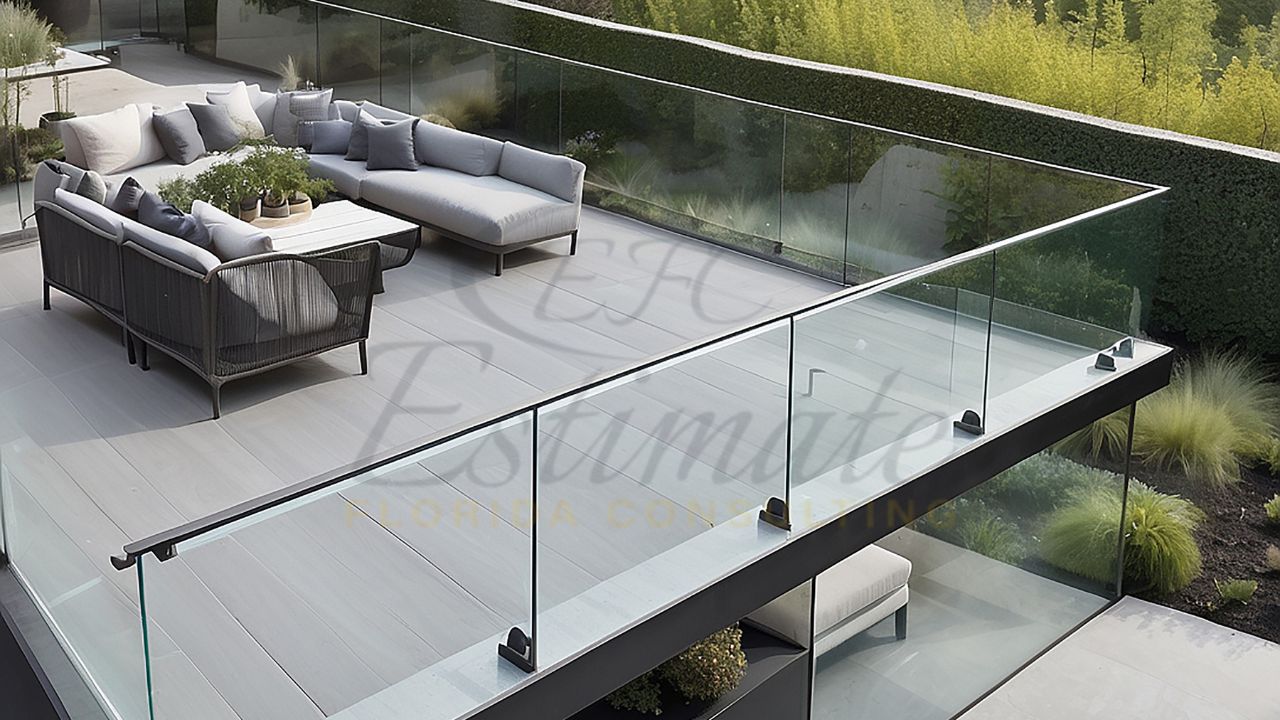
- Type of glass (tempered, laminated, or frosted)
- Mounting style (frameless, semi-frameless, or fully framed)
- Length and height of the railing
- Labor and installation complexity
- Additional features (handrails, posts, LED lighting)
Average Glass Railing Cost by Project Type
The cost of glass railing installation depends largely on where it is being installed. Residential projects, like balconies and decks railings, generally cost less than large commercial or custom installations. Here’s a detailed breakdown:
Project Type | Average Cost | Notes |
Small Balcony (up to 10 ft) | $1,500 – $4,000 | Standard tempered glass panels with basic posts |
Deck Railing (up to 20 ft) | $2,500 – $6,500 | Frameless or semi-frameless options, mid-range glass |
Staircase Railing (Indoor) | $3,000 – $7,500 | Includes glass panels, posts, and handrails |
Large Balcony / Deck (Residential, 50+ ft) | $7,000 – $15,000 | Premium tempered or laminated glass with custom fittings |
Commercial Installation | $10,000 – $30,000+ | High-end glass, heavy-duty posts, safety codes compliance |
Key Notes:
- Shorter railings and standard materials are more budget-friendly.
- Longer spans or custom designs significantly increase costs.
- Labor for installation varies depending on complexity and access (stairs, high balconies, or tight spaces).
Glass Railing Cost per Linear Foot
Calculating the cost per linear foot helps homeowners and contractors estimate total expenses quickly. The price depends on glass type, mounting style, and hardware quality.
Glass Railing Type | Average Cost per Linear Foot | Notes |
Frameless Glass Railing | $250 – $450 | Sleek modern look, requires high-quality tempered or laminated glass |
Semi-Frameless Glass Railing | $150 – $350 | Glass panels supported by posts, balance of style and cost |
Fully Framed Glass Railing | $100 – $250 | Most budget-friendly, standard aluminum or steel frames |
Glass with LED Lighting | $300 – $500+ | Adds ambiance and modern aesthetics, increases material and labor cost |
Frosted / Etched Glass Panels | $200 – $400 | Adds privacy and decorative element, slightly more expensive than clear glass |
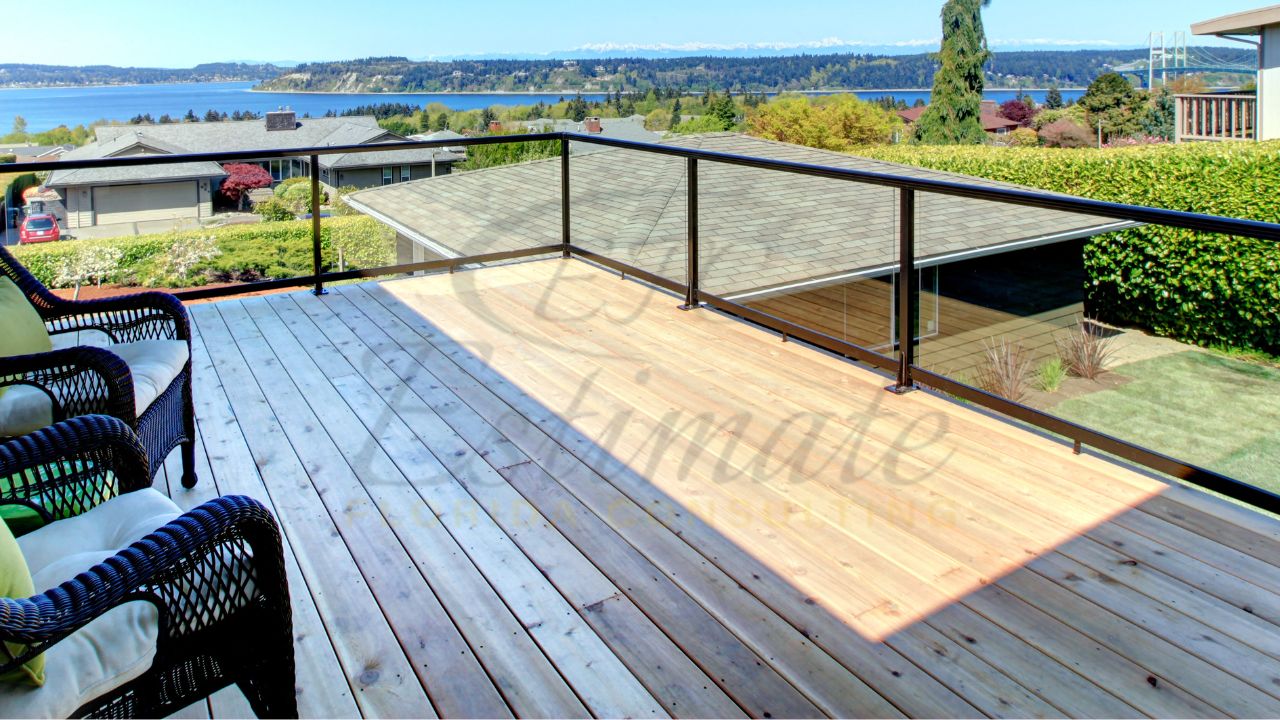
Notes:
- Length of railing: Longer runs increase total cost due to extra glass panels, posts, and labor.
- Complex shapes (curves, staircases, or custom angles) increase installation complexity and price.
- Material quality: Laminated glass and stainless steel hardware cost more than standard tempered glass and aluminum posts.
Glass Railing Installation Cost Breakdown
Understanding the breakdown of costs helps homeowners plan their budget more accurately. A typical glass railing installation cost includes materials, hardware, labor, and optional features.
1. Glass Panels
Type of Glass | Cost per Linear Foot | Notes |
Tempered Clear Glass | $50 – $150 | Standard safety glass, commonly used |
Laminated Glass | $100 – $250 | Provides extra strength and safety |
Frosted / Etched Glass | $120 – $200 | Decorative or privacy panels |
Glass panels are usually the largest single expense, often making up 40%–50% of total cost.
2. Posts and Mounting Hardware
Hardware Type | Cost Range | Notes |
Aluminum Posts | $50 – $150 per post | Budget-friendly, lightweight |
Stainless Steel Posts | $100 – $300 per post | Durable, corrosion-resistant, premium finish |
Base Shoes & Brackets | $20 – $75 per piece | Required for secure mounting, varies by style |
Handrails | $25 – $100 per linear foot | Optional, adds support and style |
Posts and mounting hardware usually account for 20%–25% of total cost, depending on design and material quality.
Get High-Quality 3D Rendering Services Today!
Transform your space with stunning 3D rendering that blends style, comfort, and functionality.
We Specialize in Both Residential and Commercial 3D rendering Projects.
- Luxury Villas
- Apartment Complexes
- Home
- Condominium
- Office Buildings
- Shopping Malls
- Hospitals
- Hotels & Resorts
3. Labor Costs
Labor costs vary based on project complexity and location:
Installation Type | Labor Cost | Notes |
Small Balcony / Deck | $500 – $1,500 | Standard installation |
Staircase / Curved Railings | $1,500 – $3,500 | Requires precision and extra time |
Large Commercial Projects | $3,000 – $10,000+ | Heavy-duty installations, safety compliance |
Labor typically makes up 30%–35% of the total project cost.
4. Additional Features
Feature | Cost Range | Notes |
LED Lighting | $50 – $150 per linear foot | Adds ambient lighting |
Frosting / Etching | $50 – $150 per panel | For privacy or decorative purposes |
Custom Curves | $100 – $300 per panel | Adds premium design element |
These features enhance aesthetics but increase the overall budget, so they should be planned carefully.
Tips to Save Money on Glass Railing Installation
Glass railings can be pricey, but there are several ways to reduce costs without compromising quality or safety:
1. Choose Semi-Frameless or Fully Framed Glass
Frameless railings are sleek but expensive. Semi-frameless or fully framed options lower material costs while still providing a modern look.
2. Keep a Standard Length and Height
Custom sizes, curves, or irregular angles increase both material and labor costs. Stick to standard heights (36″–42″) and straight runs when possible.
3. Reuse Existing Hardware
If replacing old railings, consider reusing posts, handrails, or brackets to cut down on hardware costs.
4. Buy in Bulk
Purchasing multiple panels or hardware from the same supplier can sometimes unlock discounts.
5. DIY Minor Work
Simple tasks like cleaning, painting posts, or preparing the area can reduce labor time and cost, but avoid DIY for glass cutting, drilling, or mounting, as mistakes can be costly and dangerous.
DIY vs. Professional Installation
While some homeowners attempt DIY glass railing installation, it’s important to understand the risks and challenges:
DIY Installation
- Pros: Saves on labor costs ($500 – $1,500 for small projects)
- Cons: Risk of broken glass, misaligned panels, or unsafe installation; requires special tools and expertise
Professional Installation
- Pros: Ensures safety, durability, and compliance with local building codes
- Cons: Higher upfront cost, typically 30%–35% of total project cost
- Recommended for: Staircases, curved designs, large decks, or commercial installations
- Hiring a professional is often the safest and most cost-effective choice for long-term durability and warranty coverage.
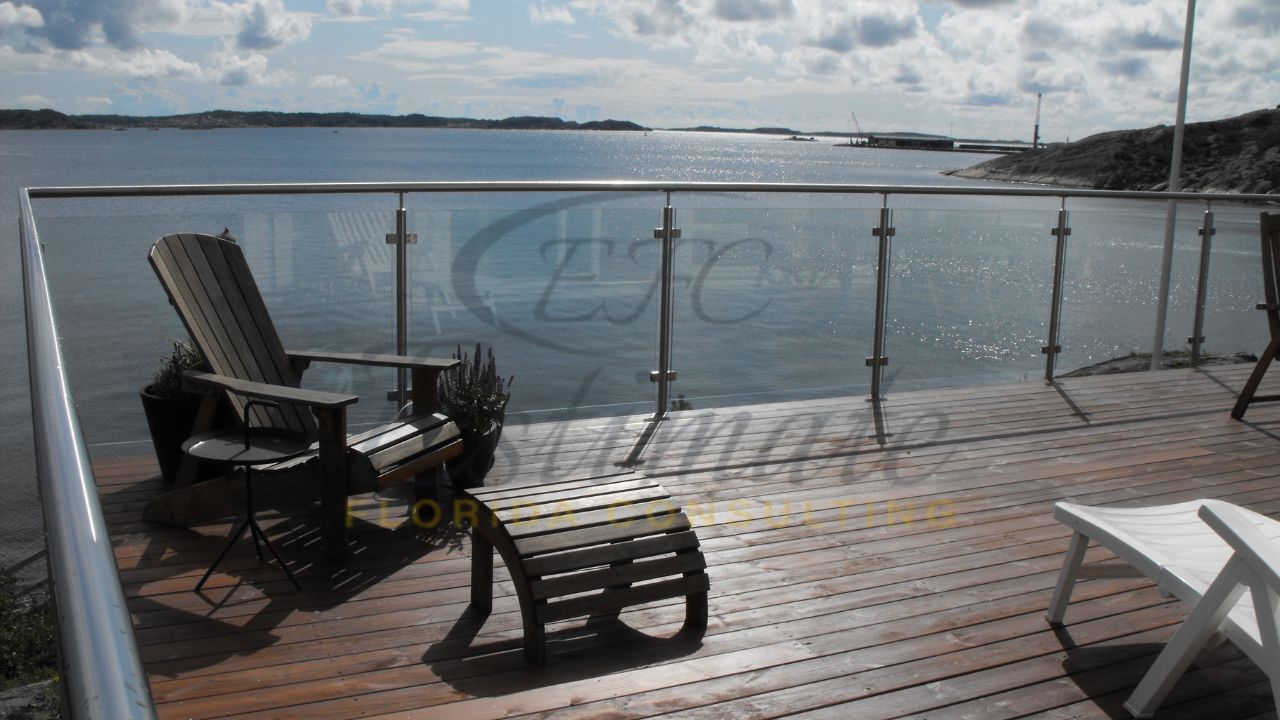
Glass Railing ROI, Maintenance Costs, and Property Value
Glass railings are not just a stylish addition—they can increase your property’s value and appeal.
Return on Investment (ROI)
Installing glass railings can provide an ROI of 50%–75% depending on the quality of materials, design, and location. Modern, visually appealing railings often attract buyers faster and can make a home feel more spacious and luxurious.
Maintenance Costs
Glass railings are low-maintenance, but regular upkeep ensures longevity:
- Cleaning: $0 – $100 per year using standard glass cleaner
- Hardware Checks: $50 – $150 every few years to tighten bolts or replace brackets
- Glass Replacement: $150 – $500 per panel if damaged
Unlike wood railing or iron railings, glass does not rot or corrode, making it a long-term investment with minimal maintenance.
Property Value Impact
- Residential Homes: A modern glass railing can improve curb appeal, enhance deck or balcony aesthetics, and potentially increase home value by 3%–5%.
- Commercial Properties: Glass railings give a professional, upscale look, attracting tenants or buyers, making the property more marketable and appealing.
Glass Railing Cost by Location / Region
The cost of glass railing installation can vary depending on geographical location, reflecting differences in labor rates, material availability, and local building codes. Here’s a general guide for 2025:
Region | Average Residential Cost | Notes |
Northeast | $3,500 – $12,000 | Higher labor and material costs; permits may be more expensive |
Southeast | $2,500 – $10,000 | Moderate costs, commonly used for decks and patios |
Midwest | $2,000 – $8,500 | Budget-friendly region, labor costs lower |
Southwest | $3,000 – $11,000 | Popular for modern homes and high-end decks |
Northwest | $3,500 – $13,000 | Higher-end materials and labor rates |
California / West Coast | $5,000 – $15,000+ | Premium installations common; high labor and material costs |
Notes:
- Urban areas generally have higher labor and permit fees.
- Rural areas may have lower labor costs, but material delivery could increase total expenses.
- Always check local building codes as some regions require tempered or laminated glass with specific safety standards.
Glass Railing Installation Professionals For Your Project?
Glass Railing vs. Other Railing Options
When planning a railing installation, it’s important to compare glass railings with other common options, such as wood, aluminum, and cable railings. Here’s a detailed cost and benefit comparison for 2025:
Railing Type | Average Cost per Linear Foot | Pros | Cons |
Glass Railing | $150 – $450 | Sleek modern look, unobstructed views, low maintenance | Higher upfront cost, requires professional installation |
Wood Railing | $50 – $150 | Budget-friendly, classic appearance, easy to work with | Needs regular maintenance, can warp or rot |
Aluminum Railing | $80 – $200 | Durable, low-maintenance, corrosion-resistant | Less premium look compared to glass |
Cable Railing | $100 – $250 | Modern design, easy to maintain, good views | May require tension adjustments, not ideal for high-traffic areas |
Key Insights:
- Glass railings are ideal for modern aesthetics and safety, while wood or aluminum suits traditional homes.
- Cable railings provide similar view benefits at a lower cost but may require more upkeep.
- Glass railings generally have higher ROI due to their luxurious appearance and long-term durability.
Common Mistakes to Avoid During Glass Railing Installation
Installing glass railings can be tricky, and avoiding common mistakes ensures safety, durability, and budget control. Here are the most frequent errors:
1. Choosing the Wrong Glass Type
Using non-tempered or low-quality glass may reduce upfront costs but compromises safety. Always choose tempered or laminated glass designed for railings.
2. Incorrect Measurements
Improper measurements for panels or posts can cause misalignment, gaps, or safety hazards. Accurate measurement is crucial before ordering materials.
3. Skipping Permits or Code Compliance
Many regions require building permits and adherence to safety codes. Skipping this step can lead to fines, rework, or voided insurance coverage.
4. DIY Installation Without Proper Tools
Glass panels are heavy and fragile. Attempting DIY installation without the right tools or expertise can result in breakage or injury. Professional installation is recommended for complex projects.
5. Ignoring Maintenance Requirements
Although glass railings are low-maintenance, ignoring regular cleaning and hardware checks may reduce their lifespan or appearance.
6. Choosing Cheap Hardware
Low-quality posts, brackets, or handrails may save money initially but can corrode or fail over time. Investing in stainless steel or high-quality aluminum hardware ensures long-term durability.
By avoiding these mistakes, homeowners can enjoy a safe, stylish, and long-lasting glass railing installation.
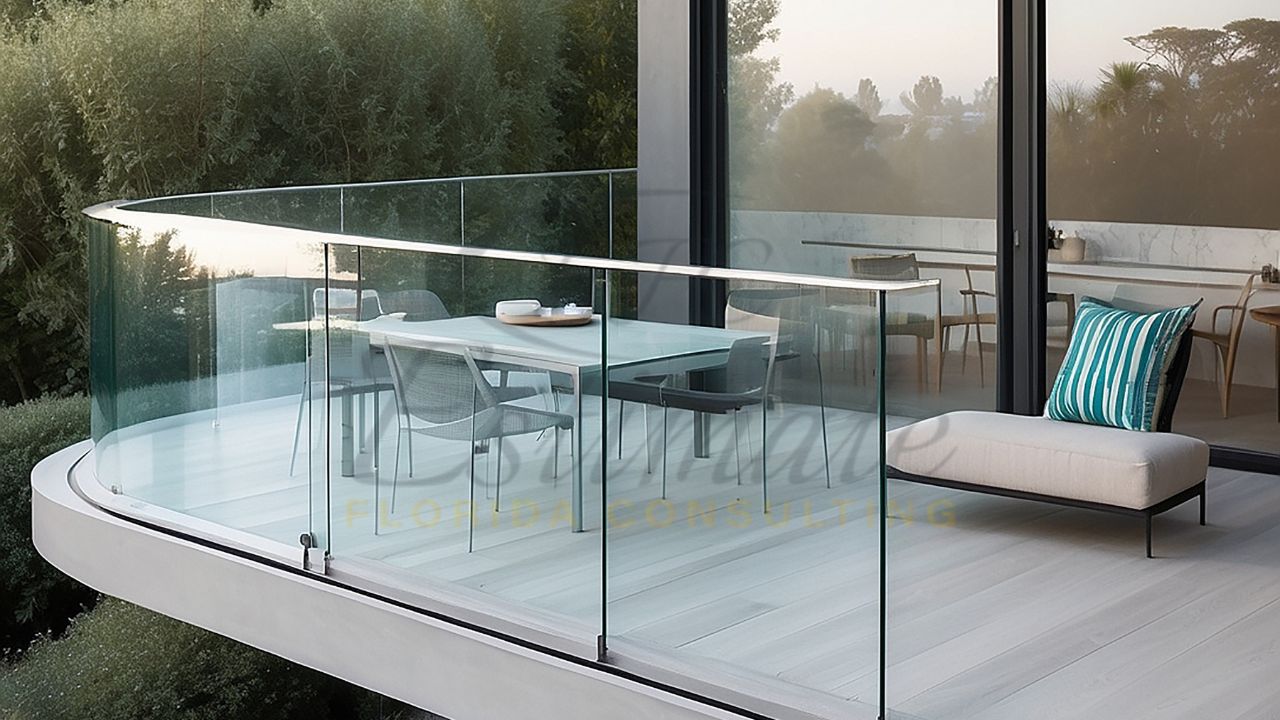
Step-by-Step Glass Railing Installation Process
Knowing the installation steps helps homeowners plan, budget, and communicate effectively with contractors. Here’s a detailed breakdown:
1. Planning and Design
- Measure the space accurately (balcony, deck, staircase).
- Decide on glass type, railing style, and hardware.
- Check local building codes and obtain necessary permits.
2. Material Procurement
- Order tempered or laminated glass panels.
- Purchase posts, handrails, brackets, and additional hardware.
- Ensure all materials match the design and measurements.
3. Site Preparation
- Clear the area of furniture, debris, and obstacles.
- Ensure the mounting surface (deck, balcony, or stairs) is level and structurally sound.
- Mark post locations according to design specifications.
4. Installing Posts and Hardware
- Secure posts firmly using anchors, screws, or brackets.
- For staircases or uneven surfaces, ensure posts are leveled and aligned.
- Attach handrails if part of the design.
5. Glass Panel Installation
- Carefully lift and position each glass panel.
- Secure panels using clamps, brackets, or channel systems depending on the railing type.
- Double-check for alignment, spacing, and safety clearance.
6. Final Adjustments and Inspection
- Tighten all screws, brackets, and clamps.
- Ensure panels are stable and free of wobble or movement.
- Clean glass panels to remove fingerprints or debris.
- Conduct a final inspection to ensure compliance with safety codes.
90% More Chances to Win Glass Railing Bids with
Our Estimate!
Glass Railing Maintenance Tips and Longevity
Proper maintenance ensures that your glass railings remain safe, stylish, and durable for years. Here’s a detailed guide:
1. Regular Cleaning
- Use a mild soap and water solution or a standard glass cleaner.
- Avoid abrasive cleaners that can scratch or damage the glass.
- Clean at least once a month or more frequently in dusty or coastal areas.
2. Hardware Inspection
- Check posts, brackets, and handrails every 6–12 months.
- Tighten loose screws or bolts to prevent wobbling.
- Replace any corroded or damaged hardware immediately.
3. Preventing Scratches and Chips
- Avoid dragging furniture or heavy objects near the railing.
- Use protective pads when moving items around glass panels.
- Repair minor chips promptly to prevent cracks from spreading.
4. Protecting Against Weather Damage
- Stainless steel and aluminum hardware resist corrosion, but coastal or rainy areas may require additional protective coatings.
- Seal or treat metal components if recommended by the manufacturer.
5. Professional Inspection
- For large or commercial installations, consider annual professional inspection to ensure structural integrity.
- Professionals can identify hidden issues like loose anchors or tension problems.
Longevity Tip: A well-installed glass railing, maintained properly, can last 20+ years, making it a long-term investment that adds both safety and aesthetic value to your property.
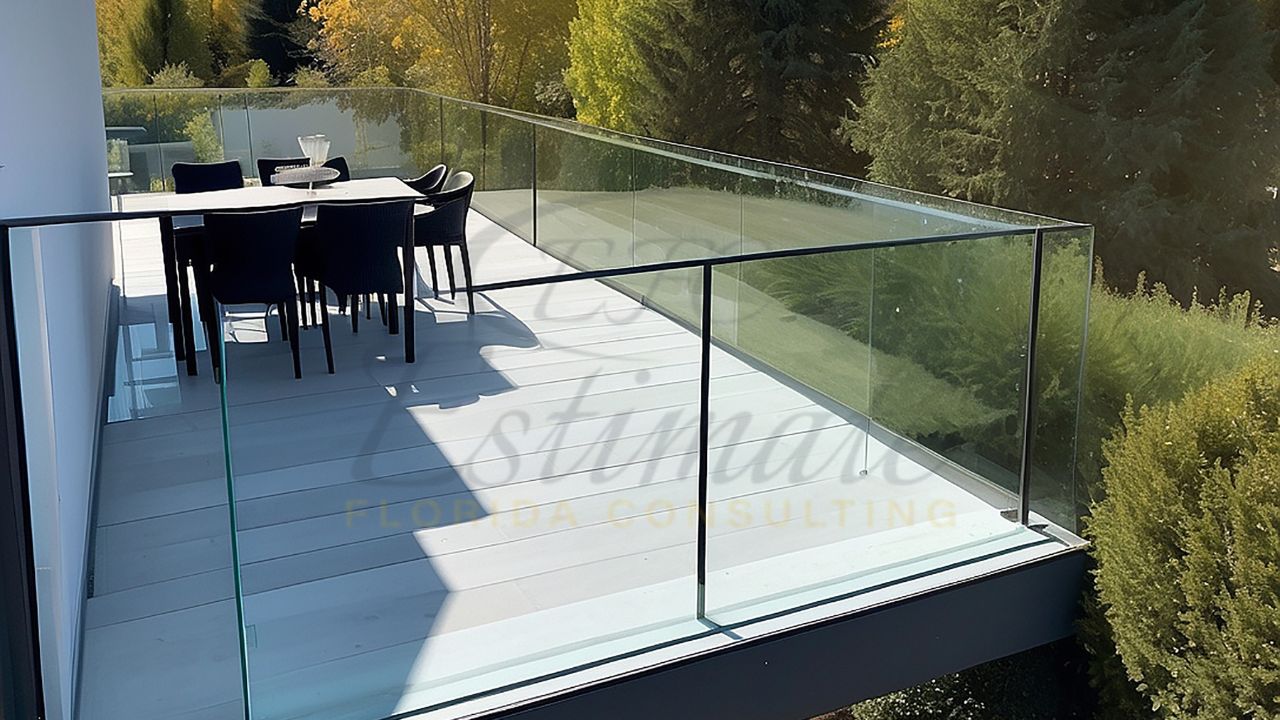
How to Budget for Glass Railing Installation?
Proper budgeting helps homeowners avoid surprises and stay on track during a glass railing project. Here’s a step-by-step guide:
1. Determine Your Project Scope
- Measure the total linear footage of the railing needed.
- Decide on the glass type, railing style, and hardware quality.
- Consider optional features like LED lighting, frosted panels, or custom curves.
2. Estimate Material Costs
- Glass panels: $50 – $250 per linear foot (depending on type)
- Posts and brackets: $50 – $300 per post
- Handrails: $25 – $100 per linear foot
- Optional features: $50 – $300 per panel or linear foot
4. Factor in Additional Costs
- Building permits: $100 – $500 depending on location
- Cleanup, removal of old railings, or site preparation: $100 – $500
- Unexpected adjustments (uneven surfaces, hidden
5. Add a Contingency Buffer
- Always include 10%–15% extra for unforeseen expenses.
- Helps cover shipping delays, last-minute design changes, or minor damages.
Example Budget for a 30-Foot Deck Glass Railing (2025 Estimates):
Item | Cost Range |
Glass Panels | $1,500 – $4,500 |
Posts & Hardware | $600 – $1,500 |
Handrails | $300 – $1,200 |
Labor | $1,000 – $3,000 |
Permits & Misc. | $100 – $500 |
Total | $3,500 – $10,700 |
Conclusion
Glass railing installation is a modern, stylish, and safe choice for both residential and commercial properties. While the initial cost can be higher than traditional railing options, the benefits—unobstructed views, low maintenance, long-term durability, and increased property value—make it a worthwhile investment.
Key takeaways for homeowners:
- Costs in 2025 range from $150 to $450 per linear foot, with total projects from $3,500 to $15,000+ depending on size, design, and location.
- Proper planning, accurate measurements, and quality materials are essential for a safe and visually appealing installation.
- Regular maintenance and inspection extend the lifespan of your glass railings up to 20+ years.
- Working with licensed professionals ensures compliance with building codes and optimal installation quality.
- Avoid common mistakes such as using cheap hardware, skipping permits, or DIYing complex projects.
With careful budgeting and thoughtful design choices, a glass railing can transform any space—adding elegance, safety, and long-term value to your home or commercial property.
Frequently Asked Question
The average cost ranges from $150 to $450 per linear foot, depending on glass type, hardware quality, and labor rates. Small residential projects may cost $3,500–$10,700, while high-end or commercial installations can exceed $15,000.
Yes, when installed properly using tempered or laminated safety glass with secure posts and brackets, glass railings meet building codes and safety standards.
DIY is possible for very simple, straight installations, but professional installation is recommended for staircases, curved designs, or high-traffic areas due to weight, fragility, and safety concerns.
With proper maintenance, glass railings can last 20+ years, making them a long-term investment in both safety and aesthetics.
- Clean glass panels regularly with a mild soap solution or glass cleaner.
- Check and tighten hardware every 6–12 months.
- Inspect for chips, cracks, or corrosion and address immediately.
Yes, glass railings enhance curb appeal, modern aesthetics, and resale value, potentially improving property value by 3%–5% depending on the installation quality and location.
Many regions require building permits and adherence to local codes, especially for decks, balconies, or commercial installations. Always check with local authorities before installation.
Comprehensive Trade-Specific Estimates
At Estimate Florida Consulting, we offer detailed cost estimates across all major trades, ensuring no part of your project is overlooked. From the foundation to the finishing touches, our trade-specific estimates provide you with a complete and accurate breakdown of costs for any type of construction project.



Our Clients & Partners
We pride ourselves on building strong, lasting relationships with our clients and partners across the construction industry.
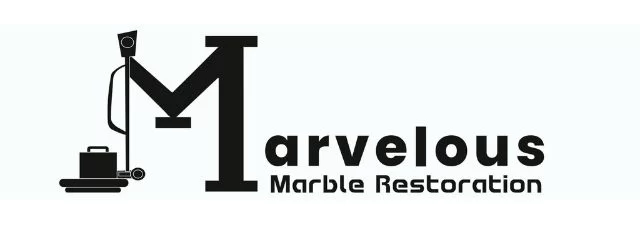

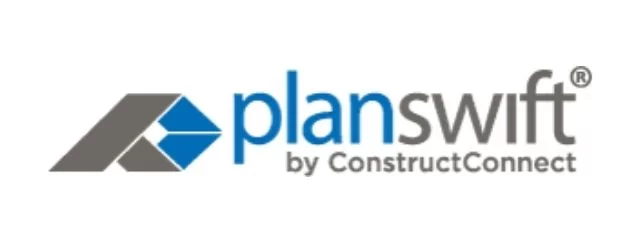
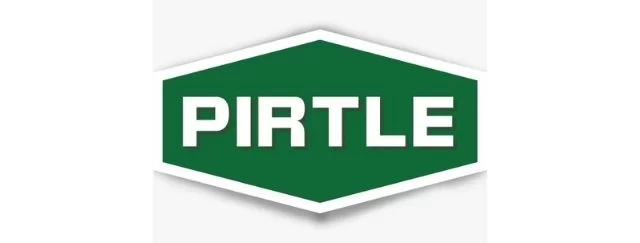

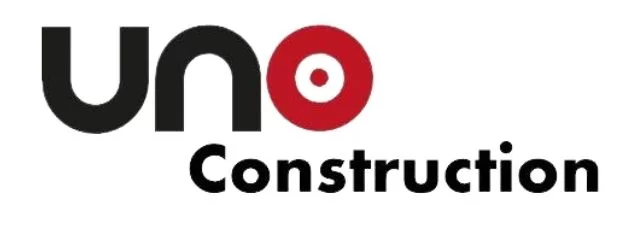
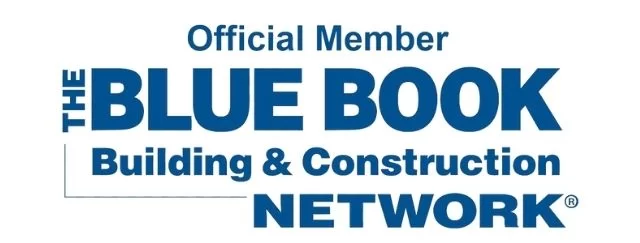
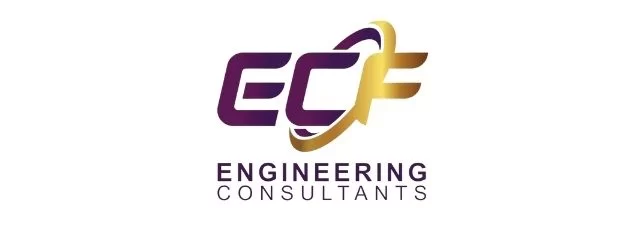
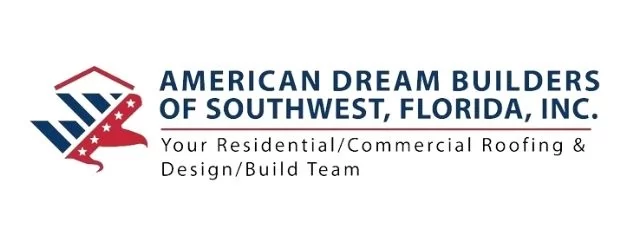


What Our Clients Say?
We take pride in delivering accurate, timely, and reliable estimates that help contractors and builders win more projects. Our clients consistently praise our attention to detail, fast turnaround times, and the positive impact our estimates have on their businesses.
Estimate Florida Consulting has helped us win more bids with their fast and accurate estimates. We trust them for every project!
